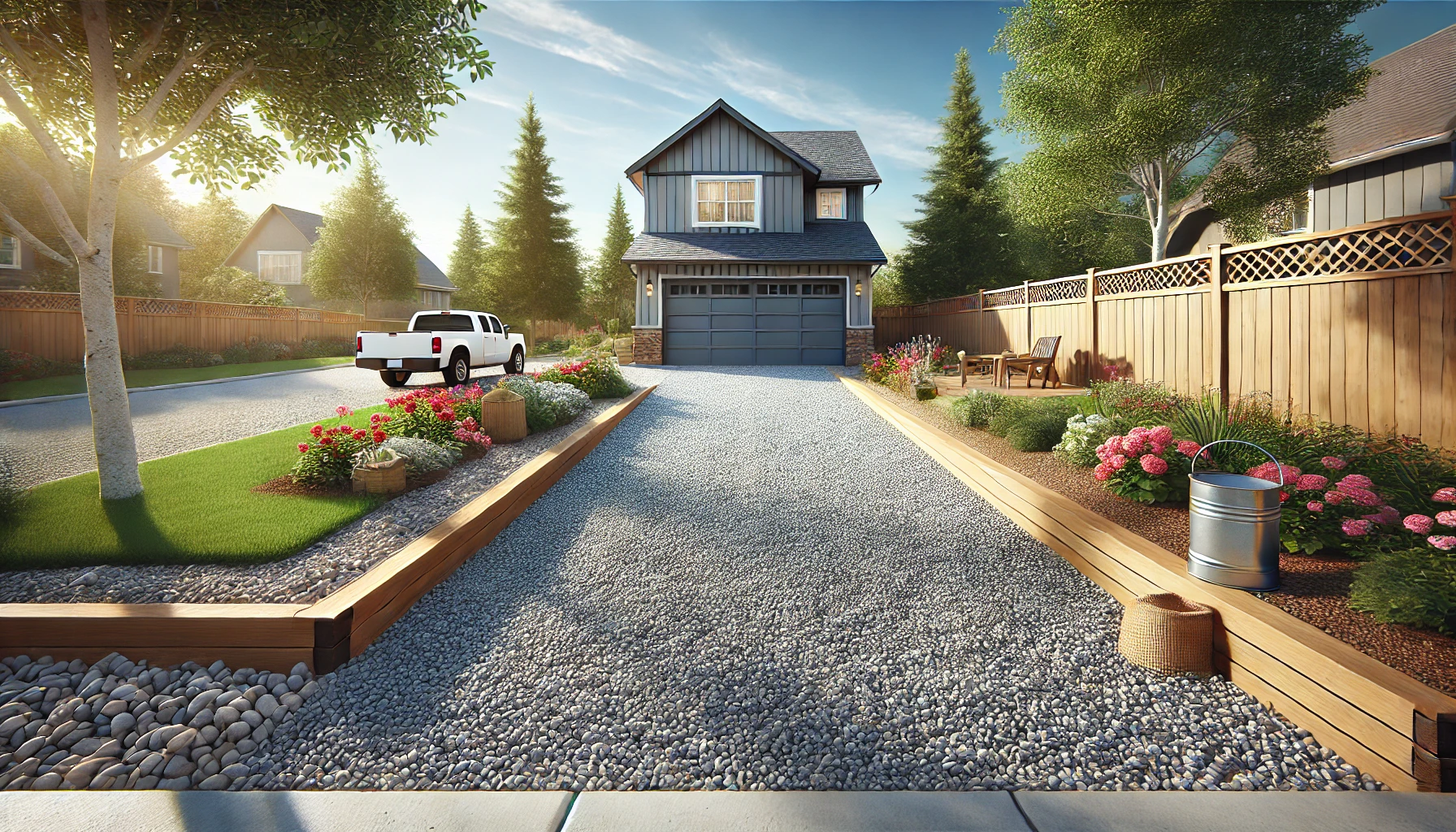Did you know that cracks in your concrete driveway can decrease your property’s value by up to 30%? Taking action to repair these cracks not only enhances your home’s curb appeal but also prevents further damage. In this step-by-step guide, we will walk you through the simple yet effective process of repairing cracks in your concrete driveway. From assessing the damage to choosing the right materials and executing the repair, you’ll learn everything you need to restore your driveway to its former glory. Say goodbye to unsightly cracks and hello to a smooth, pristine driveway with our expert tips.
Key Takeaways
- Regularly inspect your concrete driveway: Check for cracks and damages to address them promptly and prevent further deterioration.
- Clean and prepare the cracks properly: Thoroughly clean the cracks, use appropriate tools for preparation, and ensure the area is ready for repair.
- Follow a systematic repair process: From filling the cracks to applying sealant, follow a step-by-step approach to ensure a durable and effective repair.
- Pay attention to finishing touches: Smooth out the repaired area, match the color if needed, and apply sealant for a polished look and added protection.
- Maintain your driveway routinely: Implement regular maintenance practices like cleaning, sealing, addressing minor issues, and foundation crack repair to prolong the life of your concrete driveway.
- Seek professional help when needed: If cracks are extensive, or if you lack the expertise or tools, don’t hesitate to contact professionals for a thorough assessment and repair.
Understanding Driveway Cracks
Assessing Severity
Inspect your driveway thoroughly to understand the extent of cracks present. Look for any visible cracks on the surface. Determine whether the cracks are superficial or structural by examining their size and depth. Structural cracks may require professional intervention. Accurately measure the width and depth of the cracks using a ruler or tape measure to assess their severity.
Common Causes
Identify potential causes of driveway cracks, such as tree roots or freezing cycles, which can exert pressure on the concrete. Understand how different causes, like poor installation or heavy loads, can impact the integrity of the concrete. Learn about preventive measures like proper drainage systems or sealants to avoid future cracks in your driveway.
Benefits of Repair
Enhance your property’s appearance by repairing driveway cracks, improving its aesthetics and curb appeal. Prevent further damage and deterioration by addressing cracks promptly, extending the lifespan of your driveway. Increase the value of your property with a well-maintained driveway, as potential buyers are attracted to well-kept exteriors.
Preparation Steps
Tools and Materials
To successfully repair cracks in your concrete driveway, you will need essential tools such as a chisel, hammer, wire brush, and safety goggles. These tools are crucial for preparing the crack before filling it.
The types of materials required for concrete repair include concrete crack filler, concrete patching compound, and concrete sealer. These materials ensure a durable and long-lasting repair for your driveway.
Additional tools that may be helpful during the repair process include a trowel for smoothing out the filler, a putty knife for applying the patching compound, and a broom for cleaning up excess debris after the repair is complete.
Cleaning Techniques
Cleaning your driveway before repair is essential to ensure proper adhesion of the repair materials. Start by using a pressure washer to remove dirt, debris, and loose concrete particles from the crack.
Next, apply a masonry cleaning solution to the crack and scrub it thoroughly with a wire brush. This step helps remove any lingering dirt or grease that could interfere with the repair process.
The role of a masonry cleaning solution is crucial as it effectively cleans the crack and prepares it for filling. Ensure thorough cleaning to achieve a strong bond between the repair material and the existing concrete.
Choosing Repair Material
When it comes to choosing the right repair material for your concrete driveway, you have several options to consider. Concrete crack filler is ideal for small cracks, while concrete patching compound is suitable for larger areas of damage.
Each type of material has its own advantages and disadvantages. Concrete crack filler is easy to use but may not be as durable as patching compound, which offers a more robust repair solution.
To select the most suitable material for your driveway repair, assess the size and severity of the cracks. For minor cracks, a simple concrete crack filler may suffice, while larger damages may require the strength of a patching compound.
Repair Process
Cleaning the Area
To start the repair process, prepare the concrete driveway by cleaning the affected area thoroughly. Remove any debris, dirt, or loose concrete particles from the cracks. Ensure that the surface is clean and dry to allow for effective repair work.
Filling Cracks
When filling the cracks, it is crucial to demonstrate the correct method using a concrete mix. Emphasize the significance of applying the mixture properly to ensure a durable repair. Provide guidance on techniques to guarantee that the mix reaches the crack’s bottom.
Smoothing Surface
After filling the cracks, it is essential to smooth out the repaired areas for a seamless finish. Utilize a flat-edged trowel to level the surface evenly across the patched sections. Aim for a professional appearance by employing appropriate smoothing techniques.
Finishing Touches
Mixing Resurfacer
To mix the resurfacing concrete, add water gradually until achieving the right consistency. Ensure a lump-free mixture for a smooth application. Use the correct proportions for a durable repair.
Applying Sealer
Applying a concrete sealer is crucial to protect the repaired areas from damage. The sealer enhances durability and longevity. Follow proper techniques for even coverage.
- Benefits of applying a concrete sealer:
- Protects against moisture and chemicals
- Prevents cracks and spalling
- Enhances the appearance of the driveway
Protecting Driveway
After repairing, it’s vital to maintain your driveway properly. Implement protective measures to prevent future damage. Regular maintenance is key to ensuring longevity.
- Ways to protect your driveway:
- Fill expansion joints with sealant
- Avoid heavy vehicles on newly repaired areas
- Clean oil spills promptly
Maintenance Tips
Regular Cleaning
Regular cleaning is essential to preserve your concrete driveway’s longevity and appearance. Remove debris promptly to prevent staining. Scrub the surface with a mild detergent and water solution regularly.
To maintain a clean driveway, sweep away leaves, dirt, and other debris weekly. Use a pressure washer for a deep clean every few months. Implementing a consistent cleaning routine is key.
- Sweep debris weekly
- Use a pressure washer periodically
- Clean with a mild detergent solution
Sealant Reapplication
Reapplying sealant is crucial to protect your driveway from moisture and damage. Monitor the sealant’s condition annually and look for signs of wear like fading or peeling. Apply a new coat every 2-3 years.
When the sealant shows signs of wear, such as cracking or discoloration, it’s time for reapplication. Begin by cleaning the surface thoroughly before applying a fresh layer of sealant. Ensure even coverage for optimal protection.
- Check sealant annually
- Look for signs of wear
- Reapply every 2-3 years
Crack Monitoring
Monitoring repaired cracks is vital to prevent further damage. Regularly inspect cracks for any changes in size or depth. If you notice widening or lengthening, it’s time to take action promptly.
Observe repaired cracks for any expansion or crumbling edges. Address any changes immediately to avoid extensive repairs later on. Timely intervention can prevent costly damage in the future.
- Regularly inspect cracks
- Watch for changes in size
- Act promptly on any deterioration
When to Seek Professional Help
Recognizing Limits
Concrete driveway repairs can sometimes be challenging, requiring professional expertise for complex issues. DIY may not suffice for severe cracks or structural damage. Recognizing these limits is crucial.
Knowing when to seek professional help is vital. Major cracks, deep fissures, or extensive damage are signs that DIY repairs are inadequate. Understanding the severity of the issue is key.
Inexperienced individuals might struggle with technical aspects like proper material selection or application techniques. Recognizing one’s limitations in repair skills ensures a successful outcome.
Finding Experts
When facing daunting concrete driveway repairs, finding reputable professionals is imperative. Seek experts with proven experience and qualifications in concrete repair. Their expertise guarantees quality work.
Experience matters significantly in concrete repair. Professionals with years in the field possess valuable insights and skills to handle various repair challenges effectively. Opt for seasoned experts.
To select the right professional, create a checklist. Consider factors like certifications, reviews, and past projects. A well-rounded expert should meet all criteria on your checklist.
- Look for certifications and licenses
- Check reviews and testimonials
- Inquire about past projects and success rates
Avoiding Mistakes
Proper Preparation
Proper preparation is crucial when repairing cracks in your concrete driveway. Thoroughly cleaning the crack is essential to ensure the repair material adheres properly. Begin by using a wire brush to remove any debris or loose concrete from the crack.
Next, wash the area with a high-pressure hose to eliminate any remaining dirt or particles. Allow the crack to dry completely before proceeding with the repair. Ensuring the crack is clean and dry will help the repair material bond effectively with the existing concrete.
Before starting the repair, make sure you have all the necessary tools and materials on hand. This includes safety gear such as gloves and goggles, as well as the specific repair product recommended for your type of crack. Having everything prepared beforehand will streamline the repair process and prevent any delays.
Correct Application
Following the application instructions is vital to ensure a successful repair of the crack in your concrete driveway. Carefully read and understand the manufacturer’s guidelines before beginning the application process. Failure to follow these instructions could result in an ineffective repair.
To apply the repair material, start by mixing it according to the manufacturer’s recommendations. Use a trowel to fill the crack with the mixture, ensuring it is level with the surrounding concrete surface. Smooth out the excess material to create a seamless finish.
Avoid common mistakes during application, such as applying too much repair material at once. Layering thin coats is preferable to prevent cracking or uneven surfaces. Make sure to work in small sections to maintain control over the application process.
- Pros of proper preparation:
- Ensures effective bonding of repair material
- Prevents future damage due to incomplete repairs
- Cons of incorrect application:
- May lead to further cracking or damage
- Could result in an unsightly finish
FAQs
Repair Longevity
Repair longevity in concrete driveways depends on several factors. Proper preparation of the surface is crucial. Ensure the crack is clean and free of debris before applying any repair material.
To extend the lifespan of repairs, consider using high-quality sealants. Regular maintenance, such as sealing cracks and joints, can prevent further damage.
Best Time for Repairs
The best time for concrete driveway repairs is during mild weather conditions. Avoid extreme temperatures, as they can affect the curing process of repair materials.
Spring and fall are ideal seasons for repairs, with moderate temperatures and less precipitation. Plan your repairs when there is no rain in the forecast for a few days.
Cost Considerations
Concrete driveway repairs can vary in cost depending on the extent of damage. Factors such as materials used, labor costs, and the size of the repair area influence overall expenses.
Opting for cost-effective repair options like DIY patch kits can help save money. Budgeting for repairs involves estimating material costs, labor expenses, and any additional tools needed.
Final Remarks
You now have a solid understanding of how to tackle those pesky cracks in your concrete driveway. By following the step-by-step guide outlined here, you can confidently repair and maintain your driveway, enhancing its durability and appearance. Remember, regular maintenance is key to preventing extensive damage, so don’t overlook those minor cracks!
Take charge of your driveway’s upkeep today. With the knowledge and tips provided, you can ensure a smooth and safe surface for your vehicles and guests. Stay proactive, address issues promptly, and enjoy a well-maintained driveway for years to come.
Frequently Asked Questions
Can I repair hairline cracks in my concrete driveway myself?
Yes, you can easily repair hairline cracks in your concrete driveway yourself using a concrete crack filler. Make sure to clean the crack thoroughly before applying the filler for best results.
How long does it take for a concrete driveway crack repair to dry completely?
The drying time for concrete driveway crack repairs varies based on the product used. Typically, it can take anywhere from a few hours to 24 hours for the repair to dry completely. Follow the manufacturer’s instructions for specific guidance.
Is it necessary to seal the repaired cracks in my concrete driveway?
Sealing the repaired cracks in your concrete driveway is highly recommended. It helps prevent water penetration, protects against further damage, and enhances the overall durability of the repair. Use a quality concrete sealer for optimal results.
What are the common causes of cracks in concrete driveways?
Common causes of cracks in concrete driveways include freeze-thaw cycles, heavy loads, tree roots, improper installation, and soil movement. Regular maintenance, proper installation techniques, and addressing underlying issues promptly can help prevent cracks from forming.
Can I drive on my repaired concrete driveway immediately after the repair?
It is advisable to wait at least 24 hours before driving on a repaired concrete driveway to ensure that the repair has fully cured and hardened. Avoid putting excessive weight or stress on the repaired area during this curing period to maintain its integrity.






